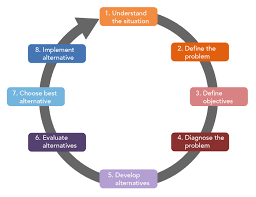What are the 6 most commonly asked questions about collaborative decision making?
- How can collaborative decision-making be used to make better decisions?
- What are the benefits of using collaborative decision-making?
- What are some common pitfalls of collaborative decision-making?
- How can teams successfully implement a collaborative decision-making process?
- How can technology help facilitate collaboration in making decisions?
- What strategies can be used to ensure everyone’s voice is heard during a group discussion on a decision?
How can collaborative decision-making be used to make better decisions?
Collaborative decision-making is a process in which multiple stakeholders come together to discuss and identify the best possible solution to a problem. This process can be used to make better decisions by allowing for more thorough research and analysis, enabling stakeholders to consider all possible options, and providing a platform for stakeholders to share ideas and perspectives. Additionally, collaborative decision-making can help ensure that all stakeholders are on the same page and are committed to implementing the final decision. By including all stakeholders in the decision-making process, it can help ensure that everyone is working toward a common goal and that all voices are heard.
What are the benefits of using collaborative decision-making?
- Improved Problem-Solving: Collaborative decision-making encourages people to think outside the box and come up with creative solutions to problems. This can lead to better decisions that are more likely to be successful.
- Increased Buy-In: When everyone has a say in the decision, they are more likely to accept it and be on board with implementation. This can help ensure that the decision is implemented properly and that everyone is working together towards a common goal.
- Enhanced Communication: Collaborative decision-making requires everyone involved to communicate effectively in order to reach a consensus. This can help build strong relationships between team members and promote open communication in the workplace.
- Increased Flexibility: By allowing different perspectives into the process, collaborative decision-making can lead to more flexible solutions than if one person was making all of the decisions. This can be beneficial for businesses that need to stay agile and adaptable in order to remain competitive in their industry.
What are some common pitfalls of collaborative decision-making?
- Groupthink: When members of a group are so focused on maintaining consensus and avoiding conflict that they ignore important facts or make poor decisions.
- Abusive Decision-Making: When one individual dominates the discussion and makes decisions without considering the opinions of other group members.
- Lack of Commitment: When decisions are made but not followed through on, leading to frustration and wasted effort.
- Poor Communication: When group members don’t communicate effectively with each other, leading to misunderstandings and confusion about what was agreed upon.
- Poor Conflict Resolution: When disagreements arise, but the group is unable to come to a resolution in an effective manner.
How can teams successfully implement a collaborative decision-making process?
- Establish clear objectives: Before beginning any collaborative decision-making process, teams should clearly define the goals and objectives of the process. This will help ensure that all team members are on the same page and that decisions are made in line with the team’s overall vision.
- Encourage open communication: Collaborative decision-making requires open and honest communication between all team members, so it’s important to create an environment where everyone feels comfortable expressing their ideas and opinions.
- Utilize a variety of methods: To ensure that all team members’ voices are heard, teams should consider utilizing a variety of methods for gathering input and making decisions, such as brainstorming sessions, surveys, polls, or other tools.
- Foster trust: Trust is essential for successful collaborative decision-making, so teams should strive to create an environment of mutual respect where everyone feels safe to express their opinions without fear of judgement or repercussions.
- Make sure everyone is heard: It’s important to make sure that all voices are heard in a collaborative decision-making process; this means actively listening to each team member’s opinion and taking their feedback into account when making decisions.
How can technology help facilitate collaboration in making decisions?
Technology can help facilitate collaboration in decision making by providing a platform for people to communicate and share ideas and information. Online tools such as video conferencing, instant messaging, and document sharing can help teams work together from different locations to make decisions quickly and efficiently. Additionally, project management software can be used to track progress and ensure that all stakeholders are informed about the decision-making process.
What strategies can be used to ensure everyone’s voice is heard during a group discussion on a decision?
- Assign a facilitator to the discussion to ensure everyone has the opportunity to speak and all voices are heard.
- Make sure everyone is aware of the ground rules for the discussion, such as taking turns speaking and respecting each other’s opinions.
- Ask open-ended questions to encourage participation from all members of the group.
- Encourage active listening by having participants repeat back what they heard from others in their own words.
- Take frequent breaks throughout the discussion so everyone can reflect on what has been said and process their thoughts before continuing with the conversation.
- Invite input from all members of the group, even if it’s not directly related to the decision being discussed, as it could provide valuable insight into different perspectives on the issue at hand.




